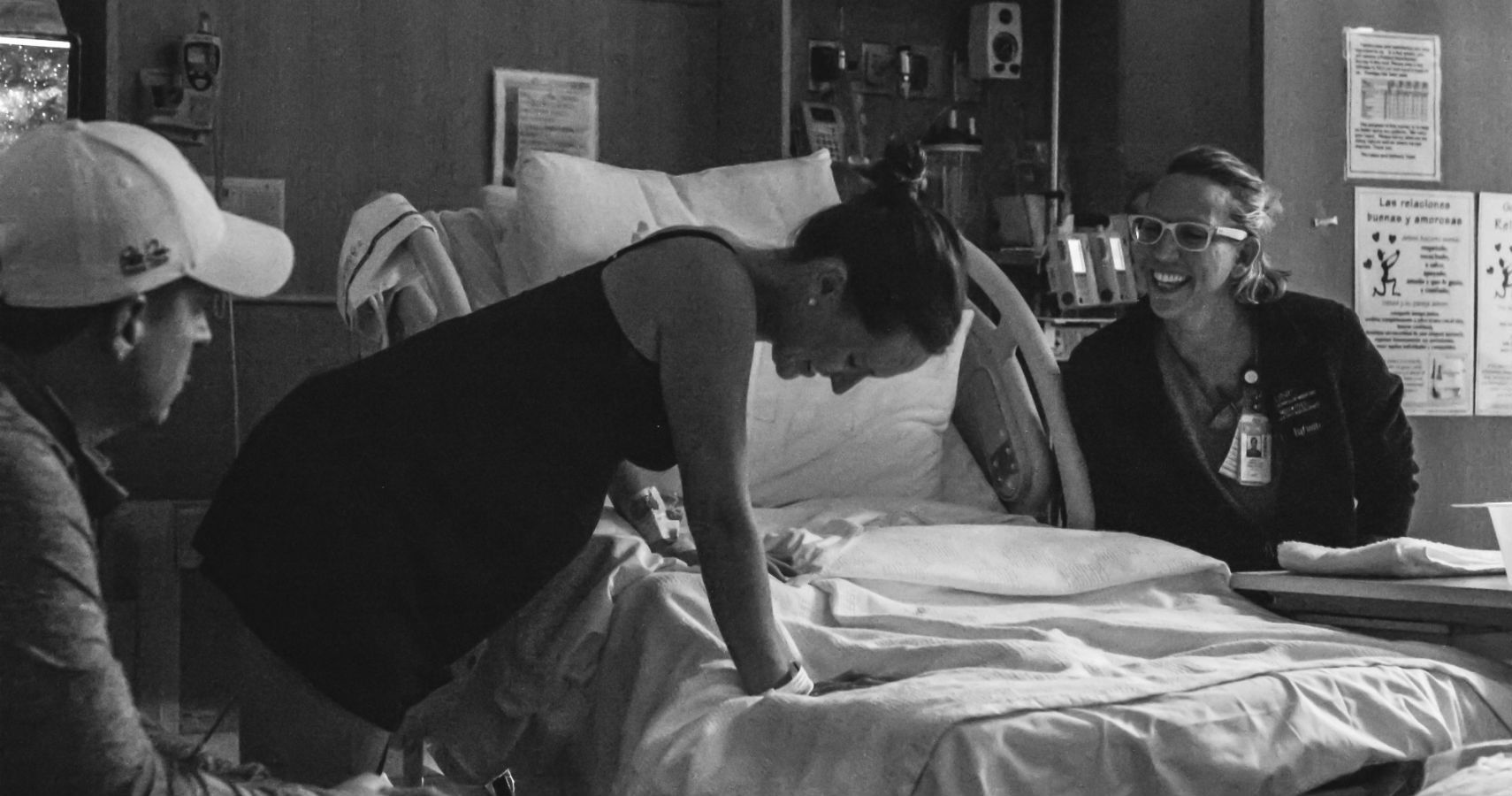Childbirth is an amazing and mysterious process. No, really! Doctors don't understand what jump-starts labor - is it the mother, the baby, or both? In fact, many doctors admit there is very little they can predict or control in labor. Those cervical checks many doctors perform during labor? They don't indicate much at all. Some nurses cut back on doing those checks because of the lack of progress from one check to another might discourage a laboring mother. In reality, a mother can progress from 4 cm to 10 cm in a matter of minutes - or hours, or days. No two labors are the same - but the stages of labor are always consistent. Early labor, Active labor and Transition are all key signposts guiding the way toward a successful delivery. Yes, cervical checks might inform doctors of ripening, but many birth workers can detect transition without needing to check a patient’s cervix. Instead, they watch for signs that the body is entering transitional labor.
Nausea
Many laboring mothers feel a strong wave of nausea come over them during transition. In fact, vomiting is quite common at this point in labor. Puking during labor does not mean you are sick or that baby is at risk. Some doctors theorize this is the body’s way to focus exclusively on labor. By ejecting food, your body is redirecting energy from digestion to pushing out a human. Smart move, body!
Pressure In Lower Back
One of the most amazing parts of labor is the baby’s descent into and through the birth canal. Called “stages”, these measurements of how far baby has “come down” help predict time until delivery. As the baby moves into the birth canal, their head and shoulders apply pressure to all surrounding areas, including the pelvis and lower back. In fact, the baby’s head pushed out an area in the lower back called the Rhombus Of Michaelis. So cool!
RELATED: 21 Things That Happen During Labor That Still Surprise Us Today
Mucus Plug
Birth is kind of gross - well, it’s beautiful but it’s also covered in lots of bodily fluids. During pregnancy, the cervix is “sealed” with a plug of mucus. As the cervix expands, the mucus loosens and comes out. Some women experience this in early labor, or in prep for labor. Losing this plus is sometimes called a “bloody show” as it can be tinged with blood. When the body enters transition, the cervix is dilated to at least 7 centimeters. This expanding cervix often shakes the last of that bloody show loose.
Shaking Legs
Perhaps because the change is so sudden and swift, the body reacts to transitional labor in odd ways. As the body enters transition, many women experience uncontrollable shaking in their legs. Hormonal shifts and triggers are largely responsible; specifically, huge amounts of adrenalin both prepare the body for birth and give the appearance of shock-like symptoms.
Chills Or Sweating
In the same vein as shaking legs, the adrenaline rush during transition gives many mothers a feeling of chills. Some moms feel feverish and sweat profusely, others feel shaky, weak, and chilled to the bone. Providing comfort measures like blankets or a cool washcloth on the neck can help soothe these signs of transition.
Rectal Pressure
The baby’s descent into the birth canal is a tight fit! While the head is passing through the birth canal, it can apply pressure to the rectum. This often creates a desire to push; some mothers describe it as the same feeling as when you have to poop. But instead of pooping, you’re getting ready to push out a baby!
Drowsiness And Exhaustion
Labor is not an easy process! Some women may labor for days before entering transition. Combine this extended labor time with a lack of food - since most hospitals don’t allow laboring women to eat or drink during labor - and it’s no wonder laboring moms are exhausted! Between contractions during this phase, mothers might take cat-naps to fight off that drowsy feeling. Again, that’s typical - no need to worry.
Emotional Lows And Confusion
If your legs feel shaky because of a huge hormonal surge of adrenaline, your mood will feel shaky, too! The massive hormonal shifts can upset even the most emotionally stable moms. Some might be especially sensitive to a seeming lack of progress during labor. Others might feel like they can no longer manage the pain. Colloquially, this symptom is why transition is called the “I Can’t” phase. Laboring moms need the most emotional support and encouragement during this phase.
Have you experienced any of these symptoms of transitional labor? I can recall a few of them from my own labors! At one point during transitional labor with my daughter, I begged my OB-GYN for pain relief. “Just give me the drugs. Where are the drugs?” Without checking my cervix, he knew that delivery was just around the corner. His decades of experience as an OB helped him recognize - this was just a symptom of transition. Soon, it would be time to push out a baby! He was right - my daughter was born twenty minutes later.
NEXT: The Essential Hormones That Start The Labor Process
Have you experienced these transition symptoms? Tell me which ones on Twitter @pi3sugarpi3 with #TransitionOfLabor.

